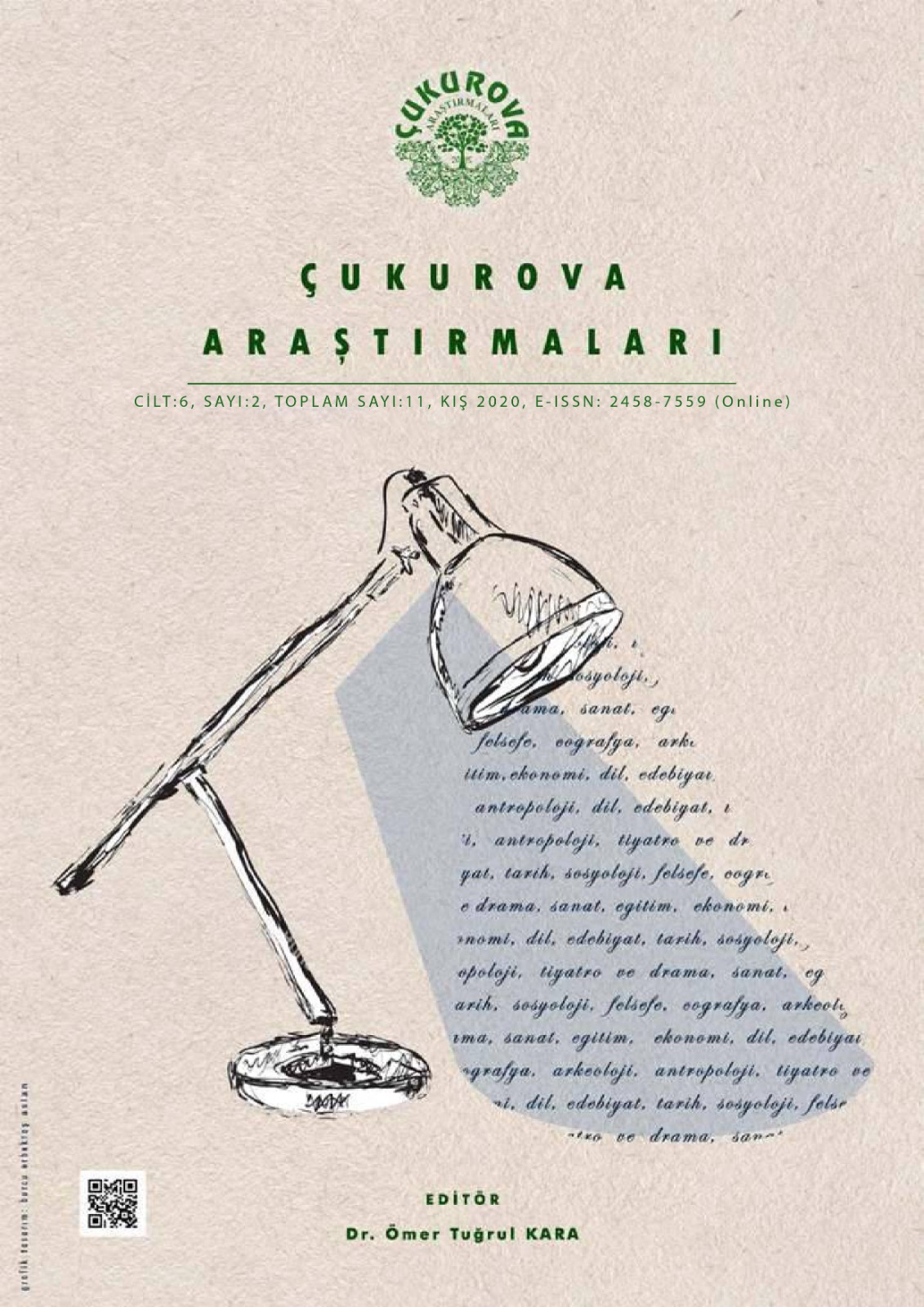Author :
Abstract
Bir disiplinin diğer disiplinlerle bütünleştirilerek öğretilmesini ifade eden disiplinlerarası öğretim kavramı ve bunun nasıl gerçekleştirilebileceği durumu alanyazında tartışılan yeni bir olgu değildir. Fakat son yıllarda STEM eğitimi gibi disiplinlerarası öğretimi vadeden yaklaşımların ortaya çıkması disiplinlerarası öğretime yönelik alanyazında yer alan bu yaklaşımları ele almayı daha da gerekli kılmaktadır. Çünkü disiplinlerarası öğretim, etkili ve anlamlı öğrenmeye olan katkısı sebebiyle ve gerçek yaşam temelli problemlerin doğası gereği, her geçen gün daha da önemi artan ve vurgu yapılan bir kavram olarak alanyazında karşımıza çıkmaktadır. Bu çalışmada bu sebeple disiplinlerarası öğretim kavramı ve disiplinlerarası öğretimi sağlamaya yönelik alanyazında yer alan yaklaşımlar ele alınarak STEM eğitiminin ilkokul kademesinde bütünleştirilmesi(entegrasyonu) bağlamında tartışılmıştır. Alanyazın incelendiğinde Drake (1991, 1998), Fogarty (1991) ve Lederman ve Niess (1997) tarafından öne sürülen yaklaşımlar yer almaktadır. Bahsi geçen bu yaklaşımların STEM eğitiminin vadettiği disiplinlerarası öğretimi sağlamada öğretmenlere yardımcı olacağı söylenebilir. Bu yaklaşımların özellikleri incelendiğinde STEM eğitimin bütünleştirilmesine yönelik birbirlerine karşı bir üstünlüğünü olmamakla birlikte STEM eğitiminin farklı yaklaşımları kullanmaya olanak sunması, bütünleştirme çeşitliliğini destekleyen bir doğası gereği, hepsinin ilkokul ve diğer öğretim kademelerinde kullanılabileceği söylenebilir. İlgili STEM disiplinlerinin bütünleştirilmesinde hangi yaklaşımın işe koşulacağı ise ele alınan problem durumu, içerik ve konu, öğrencilere kazandırılmak istenen beceriler veya öğrenci ilgi ve yönelimi göz önünde bulundurularak karar verilebilmektedir. Sonuç olarak STEM eğitiminin ilkokul ve diğer kademelerde disiplinlerarası bütünleştirilmesiyle ilgili aşağıda çizilen genel çerçevenin önerdiği yaklaşımların kullanılabileceği söylenebilir. Ayrıca bütünleştirmeyi daha da geliştirip zenginleştirmek, daha etkili yaklaşımları sınıflarda öğretmenlerin uygulamasını sağlamak amacıyla da bu alanda daha birçok tartışmanın ve araştırmanın yapılması gerektiği anlaşılmaktadır.
Keywords
Abstract
The concept of curriculum integration is a complex and challenging process that it is more than simply putting different subject areas together in the same lesson. The fact that how a discipline can be taught in an interdisciplinary way by integrating with others is not a new phenomenon in the literature. However, the emergence of approaches that promise interdisciplinary teaching, such as STEM education, makes it necessary to handle these approaches for interdisciplinary teaching. Because the idea of curriculum integration derives from educators’ awareness that problems are not divided into separate disciplines in the real world. In this study, the concept of interdisciplinary education and the approaches in the literature to provide interdisciplinary education are discussed in the context of the integration of integrated STEM education for the primary school level. We can say that these approaches will help teachers to provide interdisciplinary education for STEM integration at the primary level. When the characteristics of these approaches which were given in the literature are examined, we can say that because STEM education provides an opportunity to use different approaches, different approaches do not have superiority against each other for the STEM integration. It can be preferred according to the real-life problem situation, the scope of content and subject, skills to be taught to students, or student interest and orientation for integration. All approaches mentioned below add wealth to the STEM integration and can be used at the primary level. Also, it can be said that many more discussions and researches should be done to develop and enrich the STEM integration and to provide more effective approaches for teachers in their classrooms.
Keywords
- Bybee, R. W. (2010a). Advancing STEM Education: A 2020 vision, technology and engineering teacher. Technology and Engineering Teacher, 70(1), 30–35.
- Drake, S. M. (1991). How our team dissolved the boundaries. Educational Leadership, 49(2), 20-22.
- Drake, S. M. (1998). Creating integrated curriculum: Proven ways to increase student learning. Thousand Oaks, CA: Corwin.
- Drake, S., & Burns, R. C. (2004). Meeting standards through integrated curriculum. Virginia: Association for Supervision and Curriculum.
- Dugger, J., W. E. (2011). Evolution of STEM in the United States. http://www.iteaconnect.org/Resources/PressRoom/AustraliaPaper.pdf adresinden 31.02.2020 tarihinde edinilmiştir.
- Fogarty, R. (1991). Ten ways to integrate curriculum. Educational Leadership, 49(2), 61-65.
- Gonzalez, H. B., & Kuenzi, J. j. (2012). Science, technology, engineering, and mathematics (STEM): A primer (Report). https://www.ccc.edu/departments/Documents/STEM_labor.pdf adresinden 24.03.2020 tarihinde edinilmiştir.
- Johnson, C. C., Peters-Burton, E. E., & Moore, T. J. (2016). STEM roadmap: A framework for integrated STEM education. New York: Routledge
- Lederman, N. G., & Niess, M. L. (1997). Integrated ınterdisciplinary or thematic ınstruction? Is this a question or is it questionable semantics? School Science and Mathematics, 97(2), 57-58
- Millî Eğitim Bakanlığı (MEB). (2017). Müfredatta yenileme ve değişiklik çalışmalarımız üzerine. https://ttkb.meb.gov.tr/meb_iys_dosyalar/2017_07/18160003_basin_aciklamasi-program.pdf adresinden 14.01.2020 tarihinde edinilmiştir.
- Millî Eğitim Bakanlığı (MEB). (2018). Fen Bilimleri Dersi Öğretim Programı. Ankara. http://mufredat.meb.gov.tr/Programlar.aspx adresinden 19.01.2020 tarihinde edinilmiştir.
- Owens, D. B. (2014). Elementary teachers' perceptions of science, technology, engineering and mathematics education in k-5 schools. Phd thesis, University of Phoenix, Doctor of Education.
- Sanders, M. (2009). STEM, STEM education, STEMAnia. The Technology Teacher, 68(4), 20-27.
- Satchwell, R. E., & Loepp, F. L. (2002). Designing and implementing an integrated mathematics, science and technology curriculum for the middle school. Journal of Industrial Teacher Education, 39(3), 4.
- Stohlmann, M., Moore, T., & Roehrig, G. (2012). considerations for teaching ıntegrated STEM education. Journal of Pre-College Engineering Education Research, 2(1), 28-34.
- Uştu, H. (2019). İlkokul düzeyinde bütünleşik STEM/STEAM etkinliklerinin uygulanması: sınıf öğretmenleriyle bir eylem araştırması. Doktora tezi, Necmettin Erbakan Üniversitesi, Eğitim Bilimleri Enstitüsü, İlköğretim Sınıf Eğitimi Bilim Dalı, Konya.
- Vasquez, J. A., Sneider, C., & Comer, M. (2013). Lesson essentials, grades 3–8: Integrating science, technology, engineering and mathematics. Heinemann.
- Wang, H.-H. (2012). A new era of science education: Science teachers’ perceptions and classroom practices of science, technology, engineering and mathematics (STEM) integration. Phd thesis. Minnesota University, Doctor of Philosophy.
- Wiggins, G., & Mctighe, J. (2004). Understanding by design professional development workbook. Association for Supervision and Curriculum Development (ASCD). http://www.ascd.org/publications/books/103056.aspx adresinden 10.03.2020 tarihinde edinilmiştir.
- Williams, P. (2011). STEM Education: Proceed with caution. Design and Technology Education Journal, 16(1), 3-10.
- Yıldırım, A. (1996). Disiplinlerarası öğretim kavramı ve programlar açısından doğurduğu sonuçlar. Hacettepe Üniversitesi Eğitim Fakültesi Dergisi, 12, 89-94.





